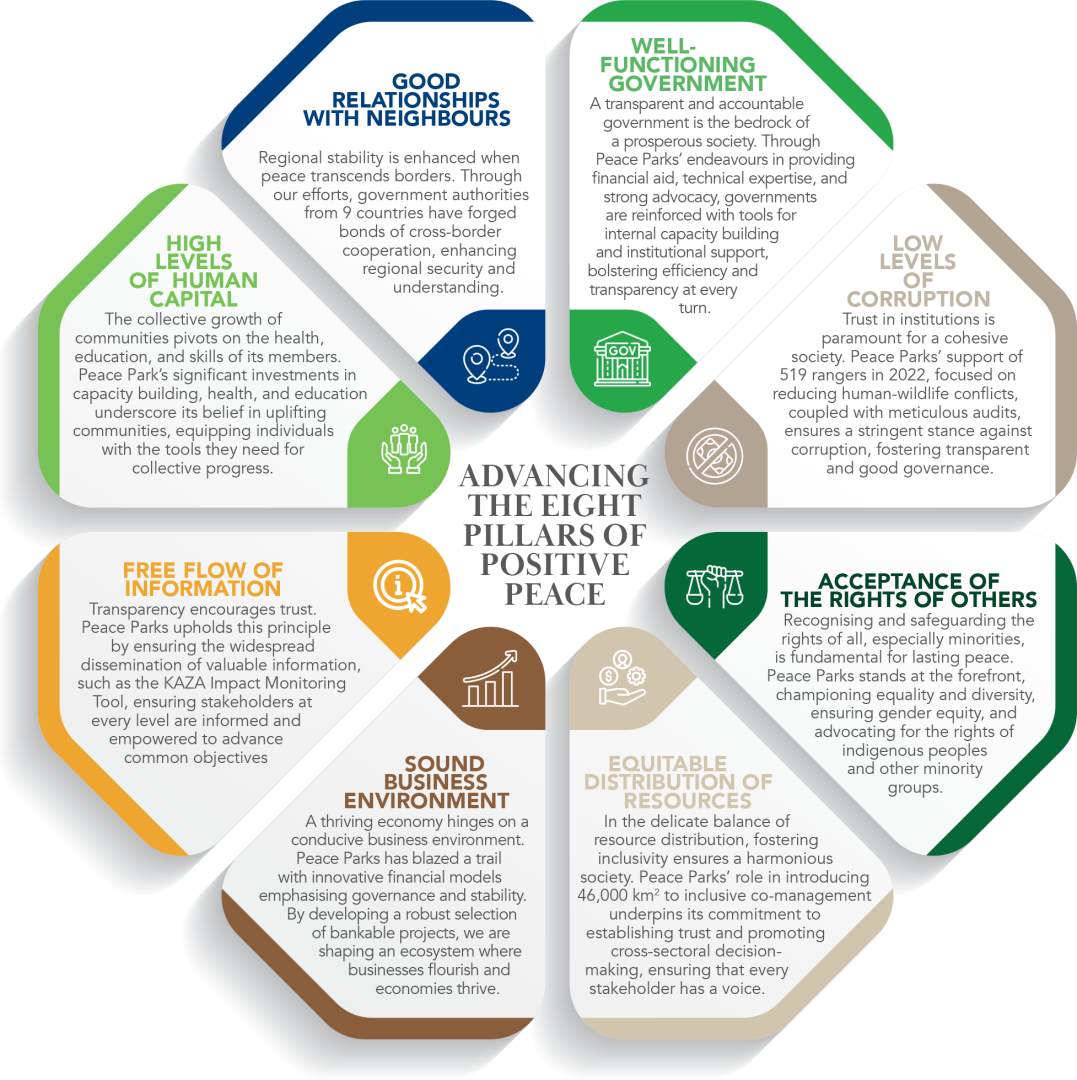Over the past 26 years, Peace Parks has facilitated the establishment of 10 transboundary conservation areas spanning 11 African countries, with the aim of establishing 980 000 km² of functional transboundary landscape. In the last decade, we have focused on five transboundary landscapes with a combined size of 675 990 km². This is the combined size of Germany, the Netherlands, Switzerland and the United Kingdom. Central to our mission is the recognition that conservation efforts must prioritise the needs and perspectives of Indigenous people and local communities, who are the custodians of these landscapes.
Our values are squarely placed on the Eight Pillars of Positive Peace developed by the Institute for Economics and Peace. Positive Peace is defined as the attitudes, institutions and structures that create and sustain peaceful societies.

THE PEACE PARKS FRAMEWORK IS BASED UPON THREE GLOBAL FRAMEWORKS Taking all of these global frameworks into account, Peace Parks works tirelessly towards nine impact areas
 The Sustainable Development Goals adopted by the United Nations Member States in 2015.
The Sustainable Development Goals adopted by the United Nations Member States in 2015.
 The Global Biodiversity Framework which sets out the global community’s overreaching goals and targets for biodiversity conservation with a 2050 vision and 2030 mission.
The Global Biodiversity Framework which sets out the global community’s overreaching goals and targets for biodiversity conservation with a 2050 vision and 2030 mission.
 The Paris Agreement, a global agreement that aims to limit global warming to well below 2 degrees Celsius compared to pre-industrial levels.
The Paris Agreement, a global agreement that aims to limit global warming to well below 2 degrees Celsius compared to pre-industrial levels.




